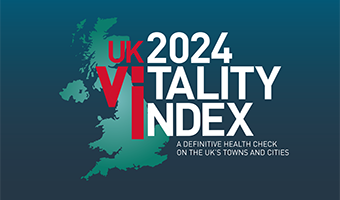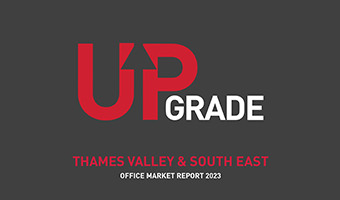Our 2022 UK Vitality Index has revealed Windsor & Maidenhead to the be the UK’s best-performing location, based on a range of measures including economy, health and environment – with the majority of the top ten all located in the South of England.
Cambridge was second highest-placed in the index and Woking third, with Edinburgh the only non-English location to appear in a top ten that also featured Reading, Cheltenham, Bath, High Wycombe, Oxford and Solihull.
The LSH Vitality Index assesses the UK’s 100 largest towns and cities outside London to identify which are the best to live and do business in, and have the strongest growth prospects. Each location was ranked on three pillars: Economy & Business; Living; and Health & Environment. An additional “Opportunity Index”, first introduced in the 2021 report, puts a spotlight on those locations best placed to overcome current challenges and grow.
Windsor & Maidenhead performed strongly in all three pillars, notably ‘Living’ (placed second) and ‘Economy & Business’ (placed tenth). Bath, Cambridge and Reading were the other members of the top ten to appear in two of the three pillars, while Oxford’s had a particularly notable jump to 9th from 26th in 2021. South East locations dominated ‘Economy & Business’, ‘Living’ was the most regionally diverse, and the South West and East of England were particularly well-represented in ‘Health & Environment’.
Dominic Faires, director and head of agency at LSH’s Maidenhead office, said: “Naturally I am a strong advocate for the advantages of Windsor & Maidenhead, but to see it take top spot in the index – improving on the second place it secured last year – underlines the fundamental strengths of the area. It has the highest level of business density of any location, with high scores for higher education attainment and affluent households, and the imminent opening of the Elizabeth Line will only increase the vitality of Windsor & Maidenhead further.”
Oliver du Sautoy, head of research at LSH, added: “The dominance of the South of England, with Edinburgh and Solihull the only locations outside of the region to appear in the top ten, reflect the continuation of longstanding differences in health, affluence and growth.
However, as the UK economy recovers from the pandemic, its legacy is likely to impact towns and cities in different ways over the coming years. Judging by the pattern of recent house price movements, we are already seeing the pandemic’s impact on working styles influence households’ choice of location. Over time, this may have a key positive influence on the prospects for UK urban areas beyond the London and the South East.
Opportunity Index
In parallel, the report’s ‘Opportunity Index’ has highlighted the latent potential in the North and Midlands, with Sheffield leading the top ten. Plymouth, in third place, was the only southern location, while Nuneaton, St Helens, Wakefield, Liverpool, Birkenhead, Wolverhampton, Birmingham and Wigan make up the rest of the top ten.
The Opportunity Index draws on a distinct range of indicators, including data on Government funded support, forecast changes to the proportion of the population aged 20-44 and housing delivery. It is designed to showcase areas that hold the greatest potential for future growth.
Sheffield’s strong showing was centred around its 20-44 demographic and it access to Government investment, having been awarded £37 million from the Levelling Up Fund. The Fund was a strong indicator of high placement in the Opportunity Index, with nine of the top ten having received money in the first round of grants last October.
Download the full report here
Steven Norris, national head of planning, development and regeneration at LSH, said: “Where the south dominates the main index, the appearance of nine Midlands and Northern locations in the Opportunity Index puts into sharp relief where the greatest potential lies. There is a significant correlation between this index and the levelling up agenda, and these locations stand to benefit from wider investment in coming years.
“Sheffield and Wolverhampton – first and eighth in the index respectively – illustrate this perfectly, having recently been named as the first of 20 locations to receive support from a new £1.5 billion Brownfield Fund to deliver ambitious regeneration projects. The ten places in the Index have plenty of advantages, but need specific initiatives such as this to address the challenges they face and attract future growth. For the residents of these locations, and the wider real estate industry, the opportunities are real and tangible.”
Get in touch


Email me direct
To:
REGISTER FOR UPDATES
Get the latest insight, event invites and commercial properties by email







